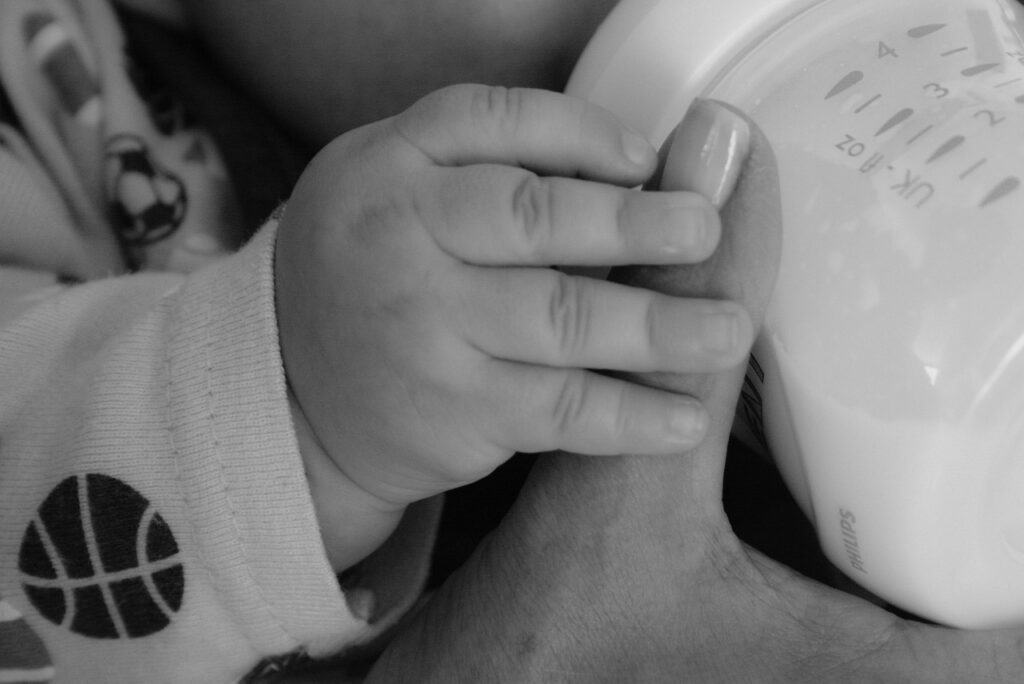Breastfeeding is a beautiful and rewarding experience, but it can also be time-consuming and exhausting. How to Reduce Pumping Sessions Without Losing Supply? is a common question for every new mother.
Pumping is a great way to provide breast milk for your baby while still maintaining your busy schedule. However, pumping can be a hassle, especially if you are doing it frequently. Many mothers wonder how they can reduce pumping sessions without losing their milk supply.
Breast pumping is the process of using a breast pump to extract milk from your breasts. It is an effective way to provide breast milk for your baby, even when you are away from them.
Breast pumps come in different types, including manual and electric, and can be used to extract milk from one or both breasts at the same time.
Maintaining milk supply is crucial for breastfeeding mothers. It ensures that your baby is getting enough milk to grow and develop properly.
When you reduce your pumping sessions, you risk losing your milk supply. However, there are strategies that you can use to reduce pumping sessions without sacrificing your milk supply.

Key Takeaways
- Breast pumping is an effective way to provide breast milk for your baby, but it can be time-consuming and exhausting.
- Maintaining milk supply is crucial for breastfeeding mothers, but reducing pumping sessions can be done without sacrificing milk supply.
- Strategies such as gradually reducing pumping sessions, hand expression, and power pumping can help reduce pumping sessions without losing milk supply.
1. Understanding Breast Pumping

Breast pumping is a process where a breast pump is used to express milk from a lactating mother’s breast. It is a common practice for mothers who are unable to breastfeed their babies or want to build up a supply of breast milk for later use.
Pumping is also used by mothers who are exclusively pumping, meaning they are not directly breastfeeding their babies.
Pumping sessions are the times when a mother uses a breast pump to express milk from her breasts. The number of pumping sessions a mother needs to maintain her milk supply depends on various factors, including the age of the baby, the mother’s milk supply, and the baby’s feeding habits.
It is important to note that breast pumping should not be painful. If a mother experiences pain during pumping sessions, it may indicate that the pump is not working properly or that the breast shield is not the right size.
A pumping schedule or routine is a plan that outlines when a mother will pump milk. It is important to have a consistent pumping schedule to maintain milk supply.
Mothers should aim to pump every 2-3 hours during the day and at least once during the night.
In conclusion, understanding breast pumping is crucial for mothers who want to maintain their milk supply while reducing the number of pumping sessions. A consistent pumping routine and proper use of the breast pump can help mothers build up a supply of breast milk for their babies.
2. The Importance of Maintaining Milk Supply

Maintaining milk supply is crucial for breastfeeding mothers. A decrease in milk supply can cause frustration, anxiety, and worry. It is important to remember that milk supply is a demand and supply system.
The more milk that is removed from the breast, the more milk the body will produce.
Reducing pumping sessions can be a challenge for breastfeeding mothers who are trying to maintain their milk supply. However, there are ways to reduce pumping sessions without losing milk supply.
Breast milk is the best source of nutrition for babies. It provides all the necessary nutrients and antibodies to help babies grow and develop.
Breast milk also helps protect babies from infections and illnesses.
Mothers who want to maintain their milk supply should try to breastfeed or pump every 2-3 hours. This will help stimulate milk production and maintain milk supply.
In addition to frequent breastfeeding or pumping, mothers should also make sure they are drinking enough water and eating a well-balanced diet. Dehydration and poor nutrition can affect milk supply.
Mothers who are concerned about their milk supply should speak with a lactation consultant or their healthcare provider. They can provide guidance and support to help mothers maintain their milk supply.
Overall, maintaining milk supply is important for breastfeeding mothers who want to provide their babies with the best possible nutrition. By breastfeeding or pumping frequently, staying hydrated, and eating a well-balanced diet, mothers can maintain their milk supply and provide their babies with the breast milk they need to thrive.
3. Signs of Adequate Milk Supply

When a mother breastfeeds, she may wonder if she is producing enough milk for her baby. Here are some signs that may indicate an adequate milk supply:
- Baby is satisfied after feeding: A baby who is getting enough milk will typically appear content and relaxed after feeding. They may fall asleep or simply be calm and alert.
- Wet diapers: A baby who is getting enough milk will generally have six to eight wet diapers a day. The urine should be pale and odorless.
- Weight gain: A baby who is getting enough milk will typically gain weight steadily. It is normal for a newborn to lose weight in the first few days after birth, but they should regain their birth weight by two weeks of age.
It is important to note that not all mothers will experience the same signs of an adequate milk supply. Some mothers may produce more milk than their baby needs, while others may produce less.
It is important to monitor your baby’s weight gain and wet diapers and to seek support from a lactation consultant if you have concerns about your milk supply.
In summary, signs of an adequate milk supply include a satisfied baby, frequent wet diapers, and steady weight gain.
4. Strategies to Reduce Pumping Sessions

For mothers who are ready to reduce their pumping sessions, there are several strategies that can be effective without compromising milk supply. It is important to note that each mother’s milk supply is unique, and what works for one may not work for another.
One effective strategy is to gradually decrease the number of pumping sessions over time. For example, a mother who is currently pumping six times per day could reduce to five sessions for a few days, then four sessions for a few more days, and so on.
This gradual approach can help the body adjust to the new schedule without causing a sudden drop in milk supply.
Another strategy is to increase the time between pumping sessions. For example, a mother who is currently pumping every three hours could gradually increase to every four hours, then every five hours, and so on.
This allows the body to adjust to longer periods of time between pumping sessions, which can ultimately lead to fewer sessions overall.
Lengthening the duration of each pumping session can also be effective in reducing the number of sessions needed. If a mother is currently pumping for 15 minutes per session, she could gradually increase to 20 minutes, then 25 minutes, and so on.
This can help the body extract more milk during each session, which can ultimately lead to fewer sessions needed.
It is important to note that any transition to a new pumping schedule should be done gradually over several days or even weeks. Abrupt changes can lead to a sudden drop in milk supply, which can be difficult to recover from.
By taking a gradual approach, mothers can reduce their pumping sessions without compromising their milk supply.
5. Potential Challenges and Solutions

Reducing pumping sessions can be a challenging process for lactating mothers. There are several potential challenges that may arise during this process, including clogged ducts, mastitis, engorgement, and discomfort. However, with the right solutions, these challenges can be overcome.
Clogged Ducts
Clogged ducts are a common issue that lactating mothers may face when reducing pumping sessions. This occurs when milk is not properly drained from the breast, causing a blockage. This can lead to discomfort and even mastitis if left untreated.
To prevent and treat clogged ducts, it is important to ensure proper milk drainage. This can be achieved through the use of breast massage, warm compresses, and frequent nursing or pumping sessions.
A lactation consultant can also provide guidance on effective techniques for preventing and treating clogged ducts.
Mastitis
Mastitis is a painful inflammation of the breast tissue that can occur when clogged ducts are left untreated. Symptoms include fever, chills, and flu-like symptoms, as well as redness and tenderness in the affected breast.
To prevent and treat mastitis, it is important to promptly treat clogged ducts and ensure proper milk drainage. This can be achieved through the use of breast massage, warm compresses, and frequent nursing or pumping sessions. In some cases, antibiotics may be necessary to treat the infection.
Engorgement
Engorgement is a common issue that lactating mothers may face when reducing pumping sessions. This occurs when the breasts become overfull with milk, causing discomfort and even pain.
To prevent and treat engorgement, it is important to ensure proper milk drainage. This can be achieved through the use of breast massage, warm compresses, and frequent nursing or pumping sessions.
In some cases, a lactation consultant may recommend the use of a breast pump to help alleviate engorgement.
Discomfort
Reducing pumping sessions may also lead to discomfort for lactating mothers. This can include sore nipples, breast tenderness, and even pain.
To alleviate discomfort, it is important to ensure proper milk drainage and to use techniques such as breast massage and warm compresses. A lactation consultant can also provide guidance on effective techniques for reducing discomfort during the pumping process.
6. Weaning Off Pumping

Weaning off pumping can be a gradual process that allows the body to adjust to producing less milk. It is important to note that weaning off pumping does not mean weaning off breastfeeding altogether.
It simply means reducing the number of pumping sessions while maintaining milk supply.
Start Slowly
To begin weaning off pumping, start by gradually reducing the number of pumping sessions per day. It is recommended to reduce one pumping session per week until reaching the desired number of sessions.
Listen to Your Body
It is important to listen to your body during the weaning process. If you experience discomfort or engorgement, consider reducing the number of pumping sessions more slowly.
You may also consider pumping for a shorter amount of time during each session.
Nurse More Frequently
To maintain milk supply while reducing pumping sessions, try nursing more frequently when possible. This can be done by nursing on demand or adding in additional nursing sessions throughout the day.
Consider Your Job
If you are returning to work and need to reduce pumping sessions, consider talking to your employer about a flexible schedule or finding a private space to pump. It may also be helpful to pump during your commute to and from work.
Supplement with Formula
If necessary, supplementing with formula can help ease the transition during the weaning process. It is important to speak with a healthcare provider before introducing formula to ensure proper nutrition for your baby.
By taking a gradual approach and listening to your body, weaning off pumping can be a successful process without compromising milk supply.
7. Role of Diet and Lifestyle in Milk Supply

A mother’s diet and lifestyle can play an important role in maintaining a healthy milk supply. A balanced diet that includes a variety of foods from all food groups is essential for optimal milk production.
Eating a well-balanced diet that is rich in nutrients can help ensure that a mother’s body has the necessary resources to produce milk.
Stress can also have an impact on milk supply. High levels of stress can lead to a decrease in milk production.
It is important for nursing mothers to find ways to manage stress, such as practicing relaxation techniques or engaging in activities that they enjoy. Getting enough rest is also crucial for maintaining a healthy milk supply.
It is important for nursing mothers to listen to their bodies and respond to their needs. If a mother is feeling tired or run down, it may be necessary to take a break from pumping or nursing.
It is also important to stay hydrated and to drink plenty of water throughout the day.
In addition to a balanced diet and stress management, there are certain foods and beverages that can help support milk production. Some foods that are known to promote milk production include oatmeal, fenugreek, and brewer’s yeast.
It is important to note, however, that there is limited scientific evidence to support the effectiveness of these foods in increasing milk supply.
Overall, maintaining a healthy diet, managing stress, getting enough rest, and listening to your body are all important factors in maintaining a healthy milk supply. By taking care of themselves, nursing mothers can help ensure that they are able to provide their babies with the nourishment they need.
8. When to Seek Professional Help

While reducing pumping sessions can be done with careful planning and monitoring, there are instances where it may be necessary to seek professional help. Here are some scenarios where seeking help from a healthcare provider, lactation consultant, IBCLC, or pediatrician may be beneficial:
1. Unusual or sudden decrease in milk supply
If a breastfeeding mother experiences an unusual or sudden decrease in milk supply, it may be a sign of an underlying issue that needs to be addressed. Seeking the advice of a healthcare provider or lactation consultant can help identify the cause of the decrease and provide guidance on how to increase supply.
2. Pain or discomfort during breastfeeding
Breastfeeding should not be painful or uncomfortable. If a mother experiences pain or discomfort during breastfeeding, it may be a sign of an issue such as thrush, a blocked milk duct, or a poor latch.
A lactation consultant or healthcare provider can help identify the cause of the pain and provide guidance on how to alleviate it.
3. Baby not gaining weight
If a breastfeeding baby is not gaining weight or is losing weight, it may be a sign of an issue with milk supply or a medical issue with the baby. Seeking the advice of a pediatrician, lactation consultant, or healthcare provider can help identify the cause of the weight loss and provide guidance on how to address it.
4. Need for additional support or guidance
Breastfeeding can be a challenging and emotional experience. If a mother needs additional support or guidance, seeking the advice of a lactation consultant, healthcare provider, or visiting websites such as Kellymom.com can provide helpful resources and information.
Overall, seeking professional help can provide valuable guidance and support for breastfeeding mothers. It is important to remember that there is no shame in seeking help and that it can lead to a more successful breastfeeding experience.
Frequently Asked Questions
How long can I go without pumping before my milk dries up?
This varies from person to person and depends on various factors such as age, health, and breastfeeding history. However, it is generally recommended to pump every 3-4 hours to maintain milk supply.
How long can I go without pumping at night?
It is recommended to pump at least once during the night to maintain milk supply. However, if your baby is sleeping through the night, you may be able to go longer without pumping.
Dropping to 3 pumps per day – will my milk supply decrease?
Dropping to 3 pumping sessions per day can decrease milk supply, but it can also be a way to gradually reduce pumping without losing supply. It is important to monitor milk supply and adjust pumping frequency as needed.
Can I go 8 hours without pumping at night?
It is generally not recommended to go 8 hours without pumping at night as this can decrease milk supply and increase the risk of mastitis. It is recommended to pump at least once during the night to maintain milk supply.
How to stop pumping without getting mastitis?
To stop pumping without getting mastitis, it is important to gradually decrease pumping sessions and monitor milk supply. It is also important to maintain good breast hygiene and to seek medical attention if any signs of mastitis occur.
How to drop pumping sessions without losing supply?
To drop pumping sessions without losing supply, it is important to gradually decrease pumping frequency and monitor milk supply. It may also be helpful to breastfeed more frequently and to use breast compression during pumping sessions to fully empty the breast.

Iesha is a loving mother of 2 beautiful children. She’s an active parent who enjoys indoor and outdoor adventures with her family. Her mission is to share practical and realistic parenting advice to help the parenting community becoming stronger.
